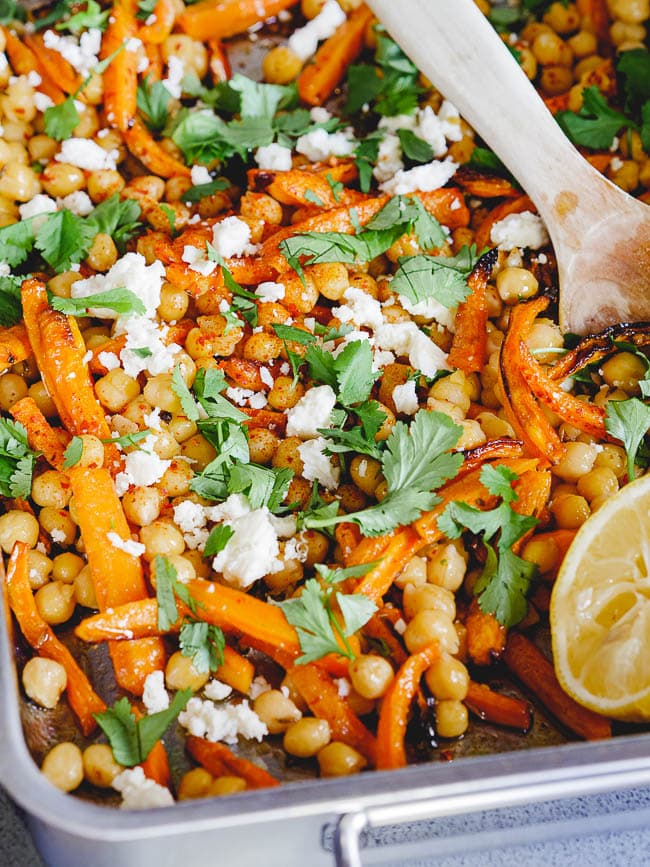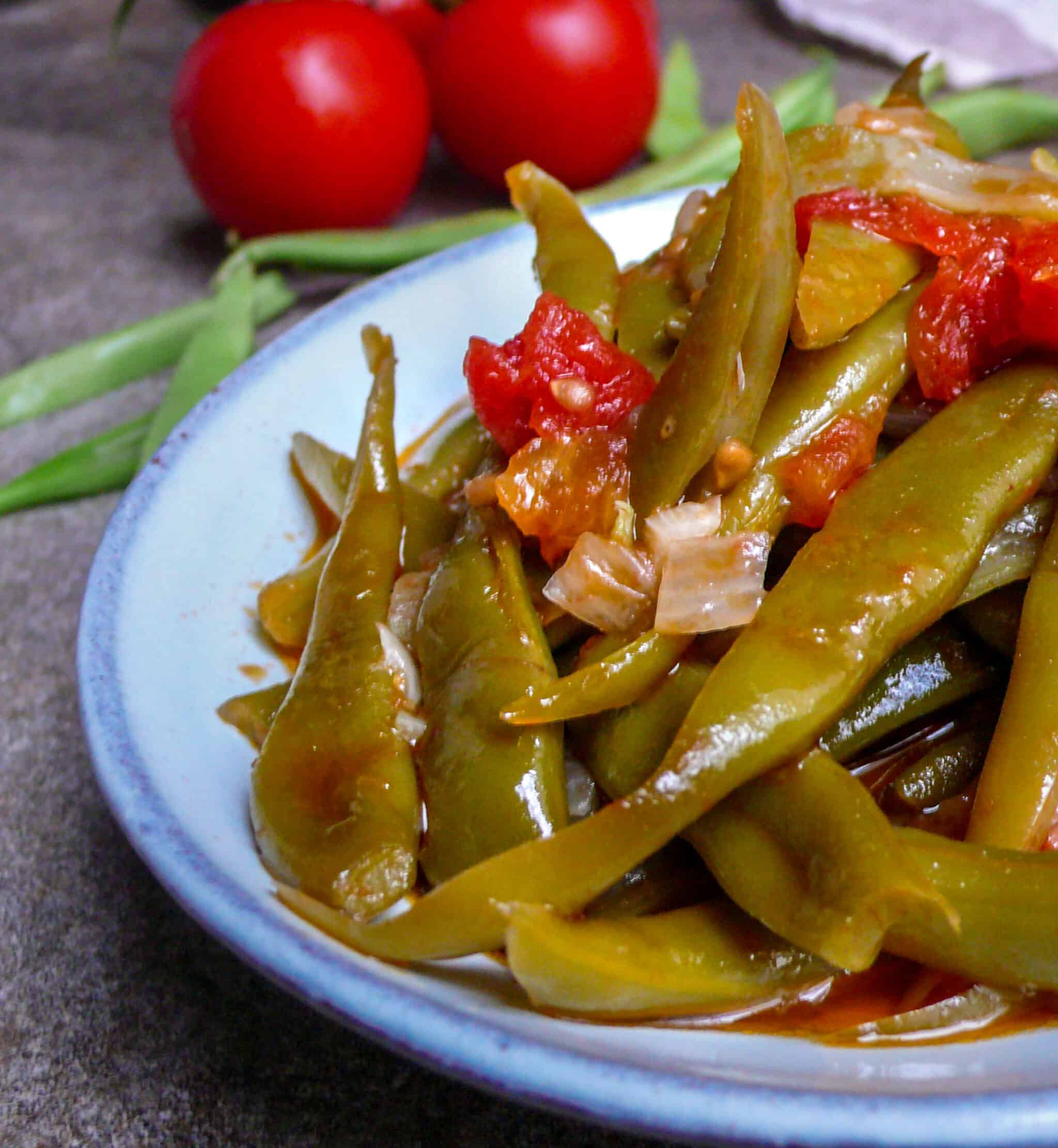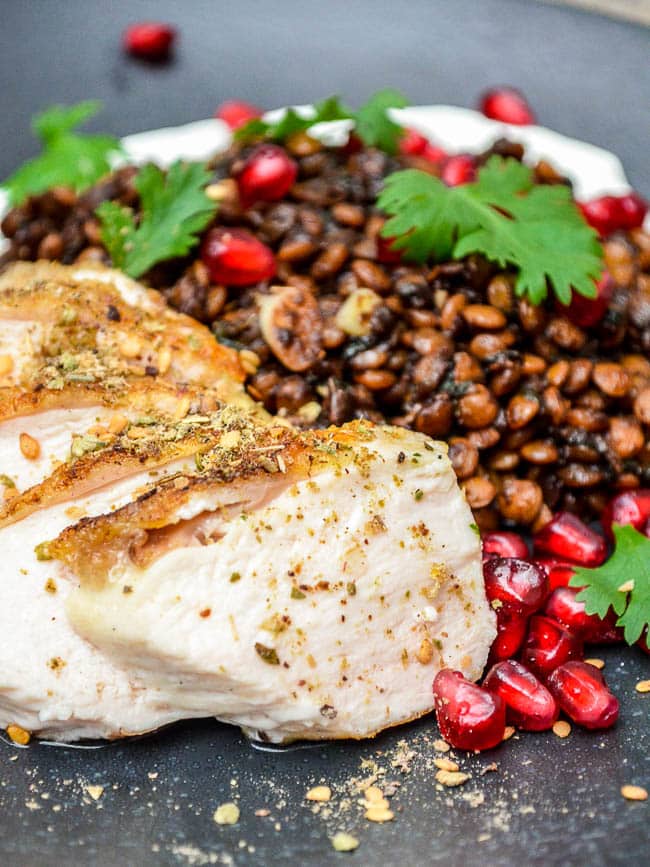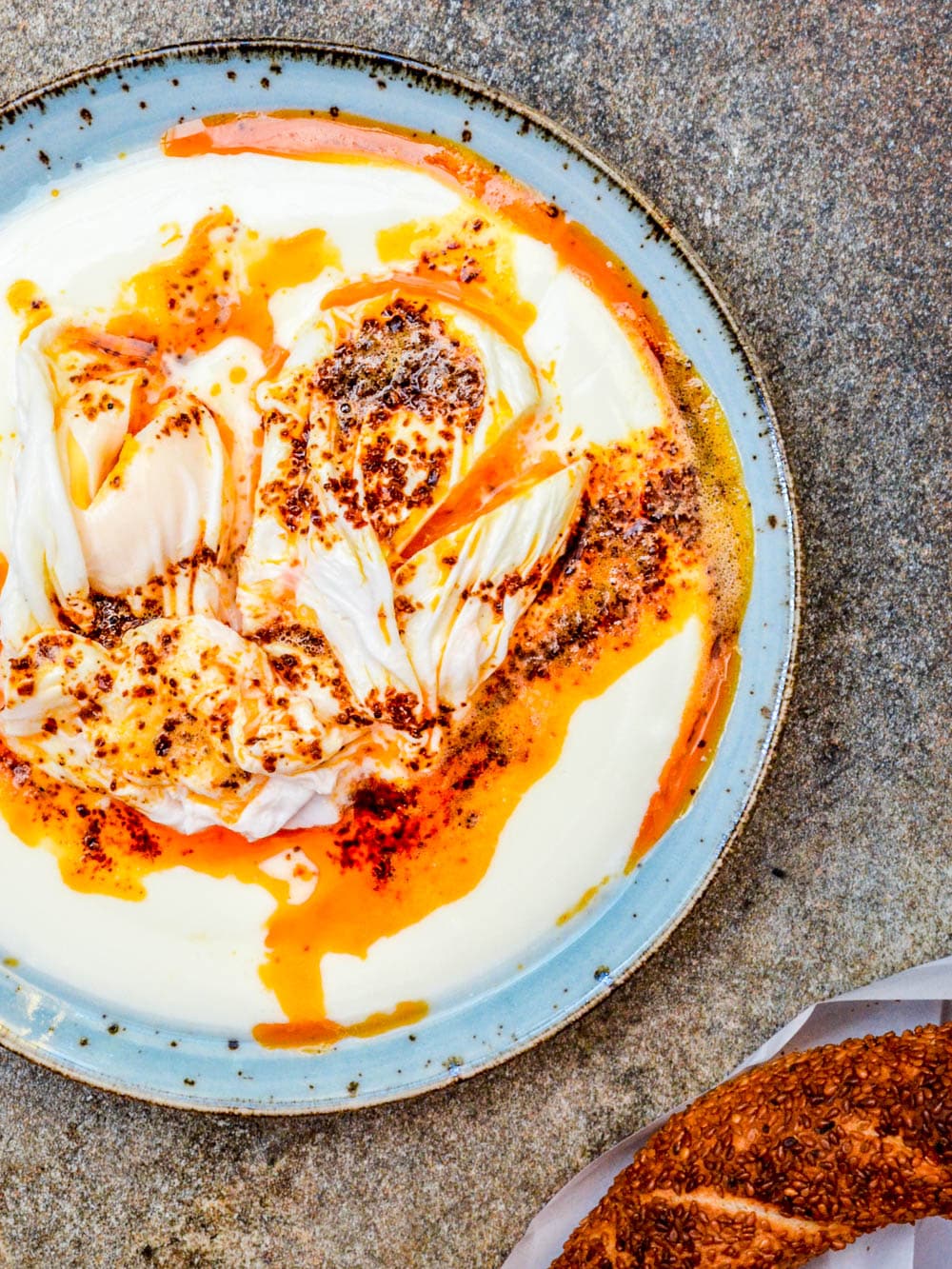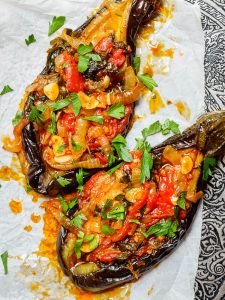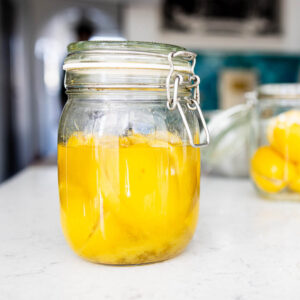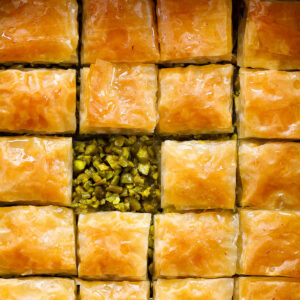Chickpeas and carrots are a brilliant foundation for flavour. They both love the strong, earthy and spicy. This simple lunch dish of warm chickpeas with roast carrot and caraway – and a few more spices to bring out all those good flavours – is a firm winter favourite of mine.
The humble carrot is perhaps my favourite vegetable. Our memories go way back to my childhood. My mother would grow her own carrots in the garden, planted into old milk cartons to keep the carrot flies away.
Oh the taste of a carrot freshly pulled from those soil filled cartons! Sweet and crunchy – I’d eat them just as they were.
Those carrots were a late summer treat. In Turkey, where I’ve lived for the past few years, carrots are firmly a winter vegetable. In summer, they’re fibrous and lackin in flavour. Come October, November, they start getting sweeter and more flavourful. And crunchy. Rather than hard, they’re suddenly snappy again.
Though some organic suppliers are quite decent, I’ve struggled to find carrots as tasty as those of my childhood here. Root vegetables and berries are probably the two things where the north will always beat Mediterranean soil and climate.
The good news, however, is that carrots are delicious cooked as well! Especially roasted, with lots of flavouring.
What’s the difference between cumin and caraway?
For some reason, caraway and cumin are confusing both in Turkey, where I now live, and Norway, where I grew up.
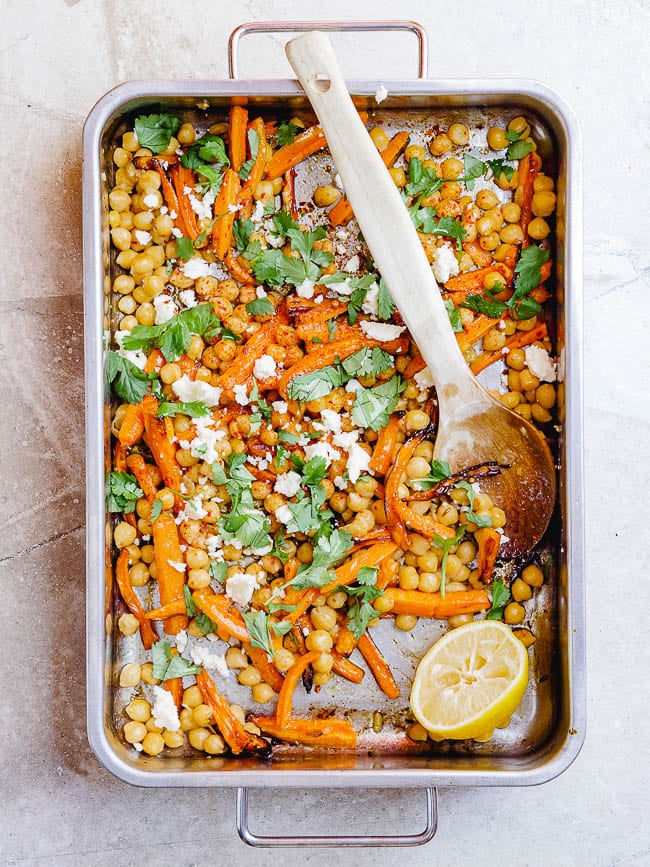
The latter is mostly a question of language. For some inexplicable reason, some chefs (and therefore their recipes), opt for the Swedish term kummin when referring to caraway, even though we have a perfectly adequate and non-confusing Norwegian word (karve). When others (wrongly and lazily) translate the English word cumin to kummin, I can see why people get confused.
In Turkey, the confusion mostly owes to caraway’s non-existence in the local cuisine. It’s called French cumin (frenk kimyonu) is Turkish, but outside the best stocked vendors at major spice markets, you’ll struggle to find even spice vendors who know what you’re looking for. Instead, they suggest regular cumin.
While they look similar, cumin and caraway have distinctly different flavour profiles. Cumin is earthy and warming, caraway more bittersweet, almost metallic.
They both work really well with roasted carrots. In this dish I’ve opted for caraway, though in this particular instance you’ll also get a delicious (if rather different) result if you use cumin instead.
Warm chickpeas and roast carrots love strong flavours
That said, caraway isn’t the only thing that helps make this dish so delicious. It’s not even the most dominating flavour. Though I love the pop of flavour every time I bite a crispy, toasted caraway seed.
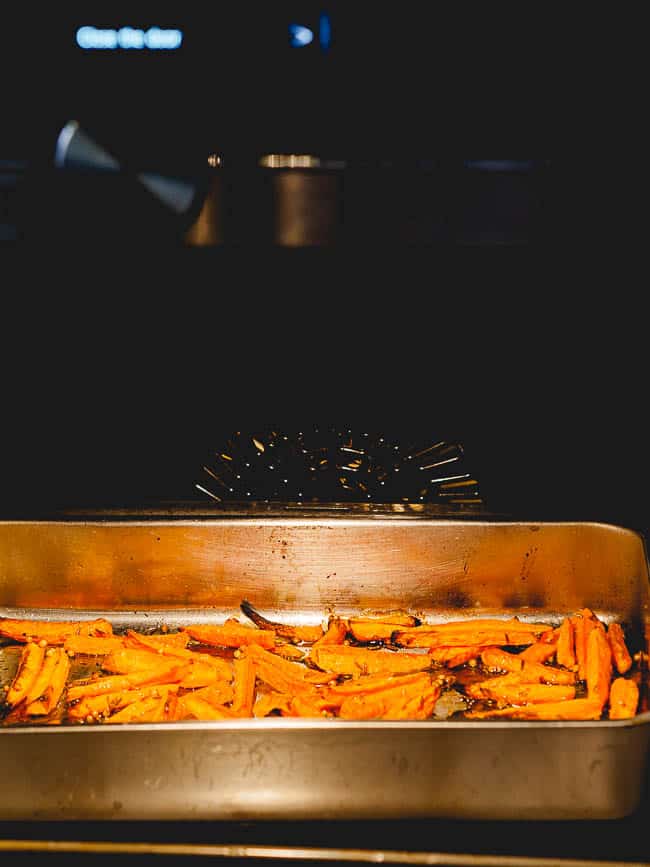
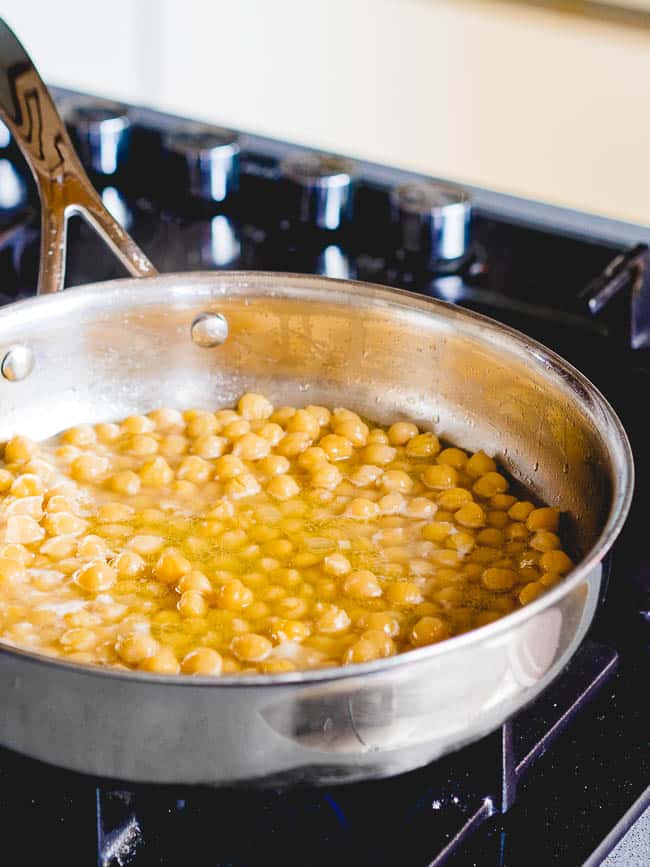
Roasted carrots have an intensely sweet flavour which is well suited to standing up to a well of spices. Honey helps bring out the natural sweetness and balance the spices.
I also add a little vinegar to the roasting tray. It may sound a little weird, but it won’t make your carrots taste vinegary. I got the idea from a number of dishes in Eastern European cuisines (and a couple of Turkish dishes too), where pickled or fermented vegetables are added to stir-fries. Sometimes, they’re even the main ingredient.
Here, I’m adding just enough to add an acidic counterbalance to the sweetness of the carrots. It intensifies the flavour of the carrots even further. But rest assured they won’t taste like pickles.
Feta cheese is always a good friend of both chickpeas and roast carrot. You can use another salty cheese, such as halloumi, as well. A tangy yoghurt dressing is another option. If using halloumi, slice it and fry it in a little oil first.
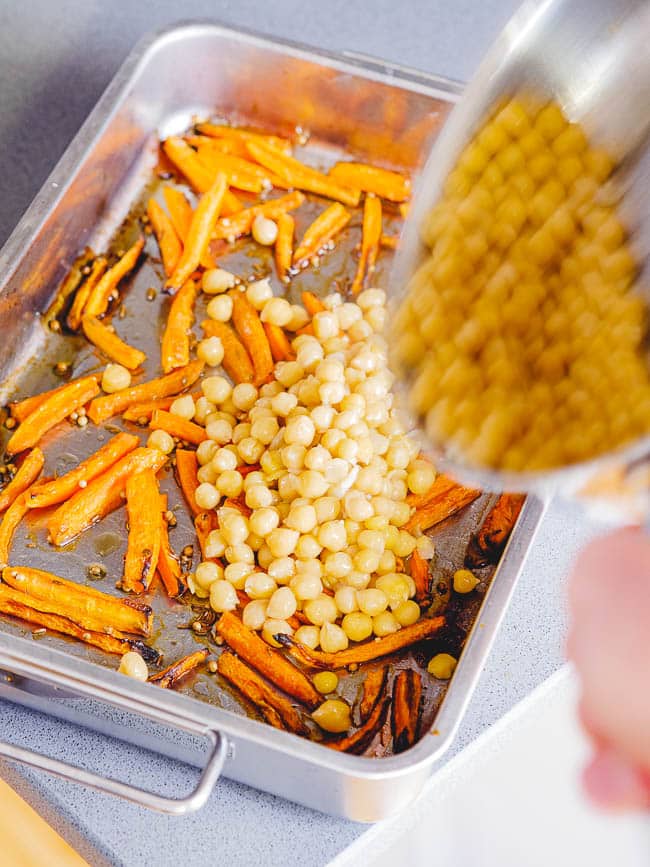
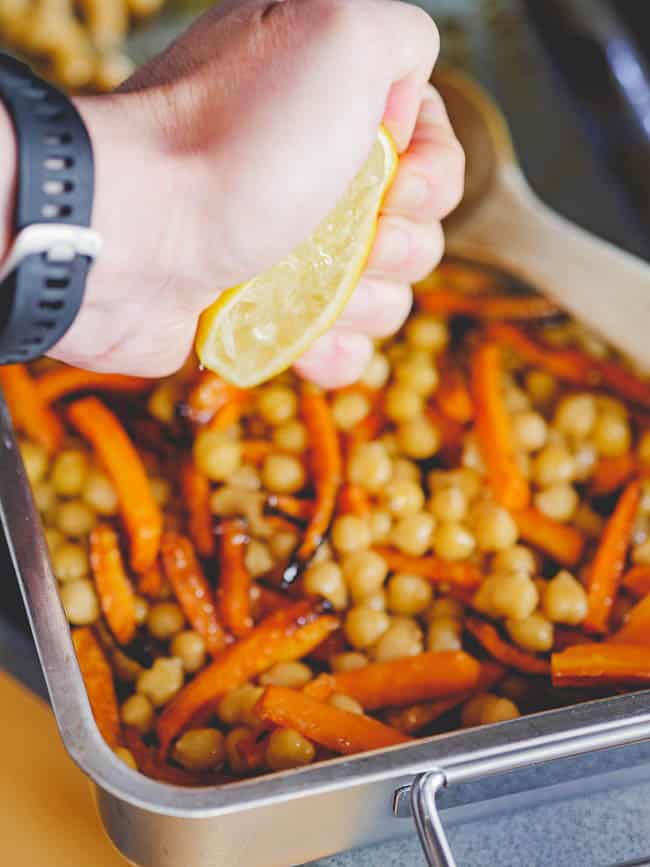
Coriander (cilantro) adds a freshness and flavour that match the caraway and coriander seed spicing perfectly! If you don’t like coriander, flat-leaf parsley can almost always be substituted in dishes where fresh coriander is called for.
Here, almost any other soft herb of your preference will also work. Basil, tarragon or a mixture of herbs, for example. If using stronger flavoured herbs (such as tarragon), you may want a little less than suggested for coriander. Trust your taste buds.
How to serve warm chickpeas with roast carrot and caraway
I serve this dish of warm chickpeas with roast carrot and caraway for lunch. It’s also excellent as a light dinner.
All that is needed alongside is fresh bread. I prefer sourdough, but pita or pan fried breads also work really well. Or why not try pide with za’atar?
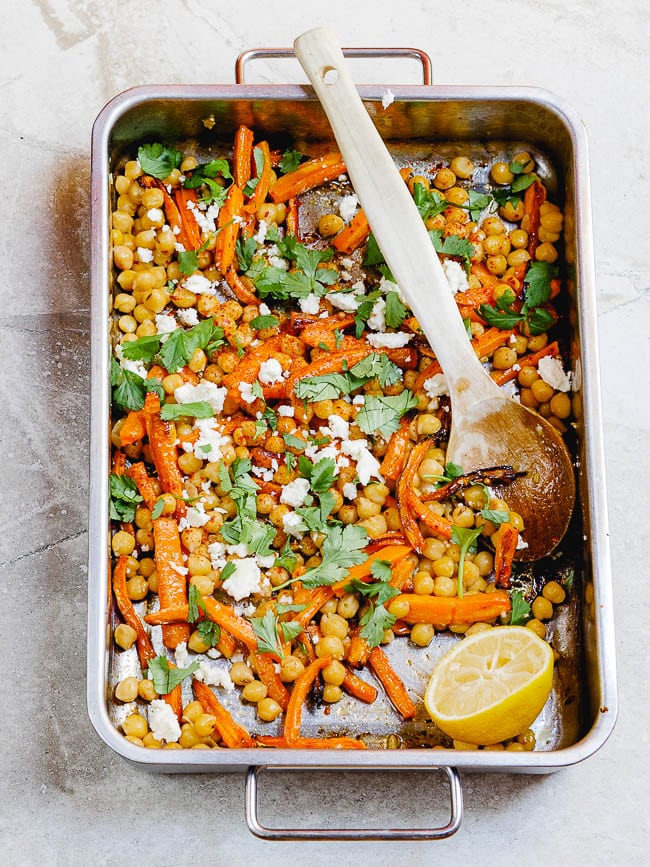
If serving for dinner, this dish is prefect alongside chicken. In fact, it works will with most simple, fried meats. And, of course, any dinner where you serve two or three different medium-sized dishes, as I often do.
I would not serve it alongside stews. The flavours are likely to clash, so when I make stews, I prefer to keep the sides simpler in flavour profile.
The recipe yields 3-4 portions. Any leftovers keep well in the fridge for several days, though I’d remove the coriander leaves (they’ll wilt quickly). Serving it fridge cold will dull the flavours, so leave it out for a while before (re-)eating.
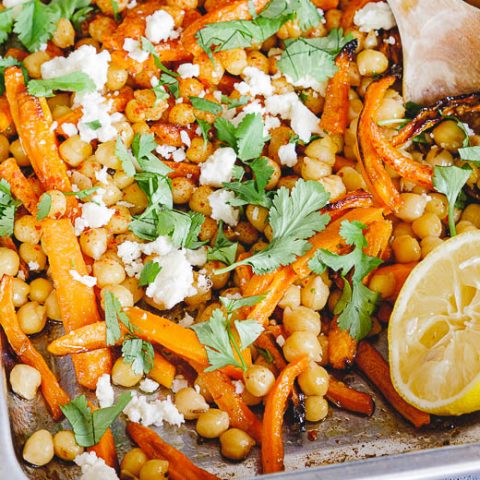
Warm chickpeas with roast carrot & caraway
Ingredients
- 500 g carrot, cut into roughly equally sized stickes (or any other shape you prefer)
- 5 Tbsp olive oil, divided (I use a mild extra virgin), plus extra to serve
- 1 Tbsp white wine vinegar, or cider vinegar
- 1 tsp honey
- 1 ½ tsp whole coriander seeds
- 1 tsp whole caraway seeds
- 3 garlic cloves, finely chopped
- 500 g cooked chickpeas, from 200 g dried, soaked and cooked, or 2×400 g cans, rinsed and drained
- 1 Tbsp lemon juice, or to taste
- 75 g feta cheese
- 1 tsp pul biber (Aleppo pepper), or other chili flakes to taste
- 10 g coriander (cilantro), or flat-leaf parsley, chopped
- water
- salt and pepper
How I make it
- Preheat the oven to
220 °C.
- Mix the carrots with 3 Tbsp olive oil, the vinegar, honey, coriander seeds, caraway seeds and a little salt and pepper. Transfer to a roasting tray (covered with a baking sheet, if you like), making sure the tray isn’t over crowded. Bake in the middle of the oven until the carrots are tender and starting to darken at the edges, around 20-25 minutes.
- Heat the remaining 2 Tbsp olive oil in a thick-bottomed frying pan over medium heat. Fry the garlic until it releases aromas but haven't yet coloured, 20-30 seconds. Add the chickpeas and a good splash of water (c. 60 ml/¼ cup). For best results, use chickpeas you've boiled from dried and the chickpea cooking water as your liquid. Bring to the boil and leave to simmer until the liquid has almost completely evaporated. This makes the garlic flavour milder. If you prefer a stronger garlic flavour, skip adding the liquid and simply heat the chickpeas in the garlicky oil. Take off the heat.
- When the carrots are ready, add the warm chickpeas to the roasting tray. Squeeze lemon juice over and mix well. Taste for salt, pepper and lemon juice.
- Top with the feta cheese, chili flakes and herbs. I also like to drizzle a little extra olive oil on top. Serve immediately.


